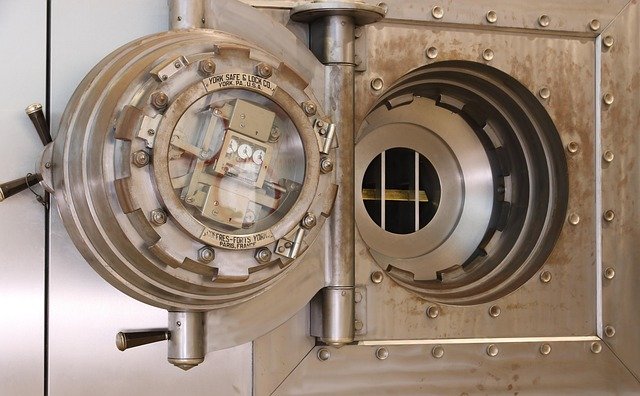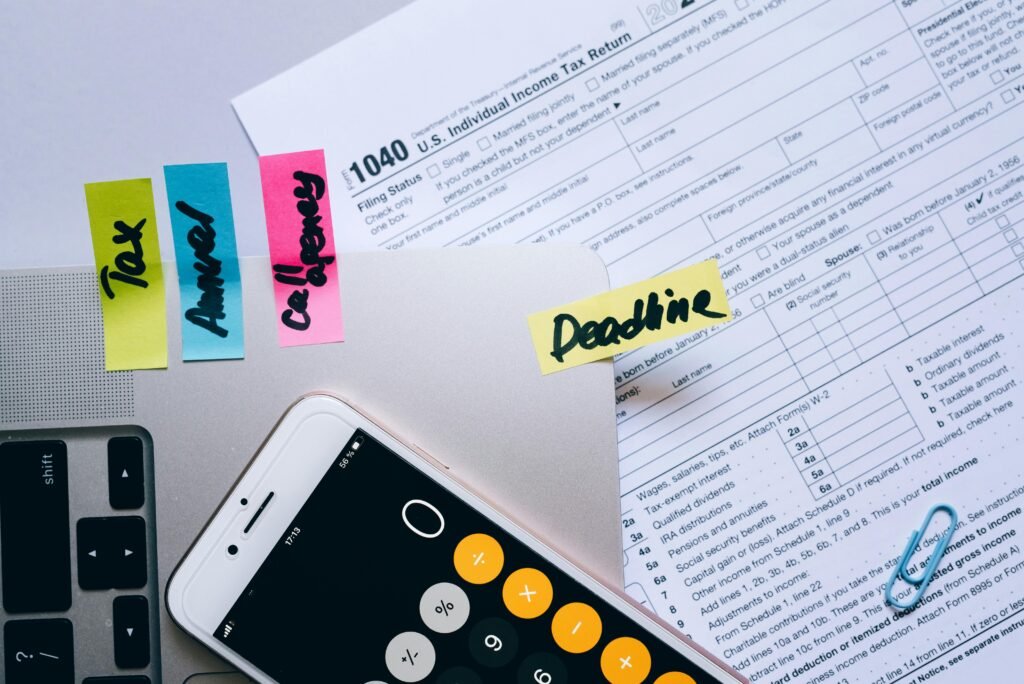Tubes, Boxes & Vaults (Cost per Kilo)
Silver is a storage problem disguised as a bargain. Ounce-for-ounce, it’s cheaper than gold—great for stacking—yet that same affordability means you’ll accumulate mass and volume fast. A hundred ounces of gold fits in your palm; the same value in silver becomes boxes. This guide gives you a practical, cost-per-kilo framework to plan home storage, bank boxes, and professional vaults—plus the gear, math, and thresholds that determine when to level up.
Introduction: Why silver storage is fundamentally different from gold
Most first-time stackers evaluate metals by spot price and premium. Experienced stackers add a third dimension: storage economics. With silver, that’s not a minor footnote; it’s an operational constraint. Because silver’s value density is far lower than gold’s, a stack that looks modest on a spreadsheet becomes heavy, space-hungry, and awkward in real life. The more you hold, the more you must think like a warehouse operator: container choices (tubes, boxes, bars), floor loading, fire ratings, insurance, and access workflows (home vs bank hours vs vault appointments).
In practice, smart silver storage is a portfolio decision as much as a logistical one. Storage costs and frictions eat into returns—exactly like a fund’s expense ratio. If you hold 50–100 kg or more, the wrong setup can shave dozens of basis points off your annual performance or create bottlenecks when you need to liquidate. This guide focuses on cost per kilo and decision thresholds: when a small home safe is fine, when a bank box becomes a hassle, and when a professional allocated vault earns its keep. You’ll leave with a clear, math-driven storage plan that fits your target weight and your tolerance for risk, access delays, and recurring fees.
The volume problem: silver vs gold
Silver is 60–80× bulkier for the same dollar value
Value density drives everything. At typical modern price relationships, gold carries ~70–80× the value of silver per troy ounce. To hold the same portfolio value in silver, you need 70–80× the ounces, which translates to 70–80× the physical volume (give or take packaging and geometry). That’s why silver “explodes” into tubes, monster boxes, and shelves while gold barely registers in your safe.
Weight and space calculations
- 1 oz silver coin: ~31.1 g metal (+ tube plastic and air).
- 500-coin monster box: ~15.6 kg of silver (312.5 oz) + packaging → ~16–17 kg gross.
- Three monster boxes (1,500 coins): ~47 kg silver; add shelving that can safely handle >60 kg per level.
- Floor loading matters: a small room can easily exceed 200–300 kg total when you include safe mass + contents.
1 kg silver vs 1 oz gold: physical comparison
- 1 kg silver bar: the size of a chunky smartphone power bank; you’ll need many for meaningful value.
- 1 oz gold coin: a compact disc of value—add a few tubes and you’ve stored six figures in a shoebox.
Silver’s bulk demands container discipline (standardized tubes/boxes) and shelving. Gold asks for security; silver asks for security + logistics.
When storage becomes a real constraint
Storage starts to bend your setup at ~10–20 kg if you rely on ad-hoc drawers or small safes, ~50 kg if you haven’t planned floors/anchoring, and 100 kg+ when access pathways (stairs, lifts, vehicle weight limits) and insurance take center stage. Past 50 kg, have a formal plan: safe specs, room layout, contingencies.
Home storage options by quantity
Small holdings (<10 kg / <320 oz): drawer or small safe
Up to ~10 kg, you can keep things simple: one or two monster boxes or a stack of 1 kg bars in a hidden drawer or compact safe. Prioritize concealment and fire rating over sheer burglary resistance; the mass is manageable and easy to move in an emergency. Use silica gel and avoid high-humidity spots (kitchens, bathrooms). Keep invoices and a photo inventory in a separate, encrypted cloud vault.
Medium holdings (10–50 kg): home safe required
In this range, you cross from hobby to operational. Buy a real safe (see specs below), bolt it into concrete, and think in layers: alarm system, reinforced door, cameras, and OpSec (don’t broadcast holdings). Organize in standard tubes/boxes and label by weight/contents to speed audits and exits. Consider two safes in different areas to reduce single-point-of-failure risk and distribute weight.
Large holdings (50 kg+): dedicated vault room or off-site
At 50 kg+, floor loading, safe mass, and insurance riders become constraints. You’re in vault-grade territory: a TL-rated safe, reinforced flooring, and possibly off-site storage for the bulk, with a home “working float” for small, immediate needs. The goal is risk segmentation: keep convenience ounces locally, put the core in a professional vault.
Packaging options
Mint tubes (20–25 coins typical)
Tubes keep coins orderly and stackable. Most government 1-oz coins ship in 20- or 25-coin tubes (≈0.62–0.78 kg silver per tube). Tubes reduce edge damage and speed counting. Downside: air gaps add volume (lower storage density vs bars).
Monster boxes (500 coins, 312.5 oz)
The workhorse container for bulk coins: 500 coins per box (often 25 tubes × 20 coins). A single box is ~16–17 kg gross and roughly a shoebox footprint, easy to stack on shelving. They’re ideal for transport, inventory, and resale (dealers love sealed boxes).
Bars vs coins: storage efficiency
1 kg bars and 100 oz bars win on density. Bars nest tightly with minimal air. If your priority is maximum ounces per liter, bars beat coins. The trade-off: bars can have slightly wider spreads in some retail markets vs popular government coins and may require assay paperwork for the very large sizes.
Loose vs protected (capsules, sleeves)
Capsules look great but eat space. For monster-box stacking, stick with tubes as-issued; use capsules only for display pieces. Sleeves or bags are fine for 1 kg bars if they don’t trap moisture. Avoid PVC plastics.
Home safe specifications for silver
Weight capacity (silver is heavy!)
A safe rated for cash may not be designed for mass. A single monster box is ~16–17 kg; a safe with half a dozen quickly exceeds 100 kg contents—plus the safe’s own mass. Check shelves and internal supports; some consumer safes sag under load.
Size/volume requirements
Estimate storage in monster-box equivalents (MBE). Each MBE ≈ 16–17 kg. If you plan for 50 kg, you need ~3 MBEs of internal space plus clearance for hand access. Bars pack tighter; a 60 L interior can hold 50–60 kg of bars with careful stacking.
Fire rating (important for protecting value)
Look for ≥60 minutes at ~900–1000 °C. While silver won’t combust, a house fire can heat-soak contents and destroy paperwork. Store documents in a fire box inside the safe for double protection.
Burglary rating (TL-15, TL-30)
A TL-15 or TL-30 safe offers tested resistance to tool attacks for 15–30 minutes—a world apart from big-box store cabinets. If budget allows, upgrade here first; burglary resistance beats cosmetic features.
Floor reinforcement considerations
Safes concentrate load on a small footprint. Wooden floors flex; spans and joists matter. Whenever possible, place safes on ground-floor concrete and anchor with appropriate bolts/epoxy. Add load-spreading plates under feet on timber floors.
Cost range: €1,000–€5,000+
A solid, bolt-down safe with 60-minute fire and meaningful burglary resistance starts around €1,000–€2,000; TL-rated units with size for 50 kg+ contents can easily run €3,000–€5,000+ installed.
Large volumes change the calculus—compare home vs vault at scale.
DIY hidden storage
Floor safes
A floor safe set into concrete offers stealth and mass support. Plan for moisture: vapor barriers, desiccants, and sealed containers matter. Access is less convenient—good for long-term holdings.
Wall safes behind pictures/furniture
Useful for small lots and paperwork, but typically too shallow for monster boxes or 1 kg bar bricks. Treat as a decoy layer, not your core.
Fake pipes, vents, etc.
Camouflage works—if you control humidity and access. Avoid spots with temperature swings (attics) or water risk (bathrooms). Document locations securely for heirs.
Security vs convenience trade-off
The better the concealment, the slower your access. Keep a small, accessible float for liquidity and tuck the bulk into hard-to-find locations or off-site.
Bank safety deposit boxes
Size limitations (often too small for large silver holdings)
SDBs are great for documents, jewelry, gold—less so for silver. Larger boxes are limited and rarely fit multiple monster boxes. You’ll outgrow them around 10–20 kg.
Weight restrictions
Banks may impose weight limits for employee safety and shelving. Ask before you move in a box that effectively weighs a bowling ball.
Cost: €50–€300/year depending on size
Costs vary widely by country and branch. For silver, the challenge isn’t the fee—it’s the capacity.
Access limitations
Bank hours, holidays, and ID controls slow you down. During regional disruptions, SDB access can be temporarily restricted.
Insurance gaps
Contents are typically not insured by the bank. You’ll need a private rider (often pricey) or accept the risk. For silver, SDBs are a bridge solution, not a long-term bulk answer.
Bulk silver requires explicit coverage limits.
Professional vault storage
Storage decisions should follow market structure & liquidity.
Allocated vs unallocated
- Allocated: Specific bars/coins in your name, segregated or pooled but identifiable.
- Unallocated: A claim on metal, not specific pieces—cheaper, but counterparty risk rises.
For physical silver you plan to keep, allocated is the default recommendation.
Major providers (Brink’s, Loomis, Via Mat)
Global operators with audits, insurance, and multi-jurisdiction locations (e.g., Zurich, London, Singapore). Ask about segregation, inspection rights, and withdrawal procedures.
Pricing structure: typically by weight or value
Vaults price storage as % of value or per-kg fee; silver often costs more per unit of value than gold because it occupies more floor space and handling time.
Silver-specific pricing (higher rates than gold per $ value)
Expect roughly 0.5–1.5% of value annually for allocated silver (market-typical range), sometimes with minimums. Always confirm whether insurance is included.
Cost range: 0.5–1.5% of value annually
For a €50,000 silver position, 0.8% equals €400/year (~€8/kg/year if your silver averages ~€1,000/kg). Run your own math with your current spot.
Cost per kilo analysis
Below are illustrative numbers to help you think in €/kg/year. Adjust with your local quotes.
Assumptions (example only):
- Spot-implied value: €850/kg (round figure for math).
- Home safe: €2,000 one-time, 10-year straight-line, capacity 60 kg, insurance rider 1% of value.
- Bank SDB: €200/year, usable capacity 15 kg.
- Vault (allocated): 0.8%/year, insurance included.
Per-kilo annual cost (if fully utilized)
| Option | Fixed/Variable | Capacity | Annualized Fixed | Variable (insur./fee) | €/kg/year |
|---|---|---|---|---|---|
| Home Safe | €2,000 / 10 yrs | 60 kg | €200/yr | Insurance ~1% of value ≈ €8.5/kg | €200/60 + 8.5 ≈ €11.8/kg |
| Bank SDB | €200/yr | 15 kg | €200/yr | Often no included insurance | €200/15 ≈ €13.3/kg (+ any rider) |
| Allocated Vault | % of value | — | — | 0.8% × €850 ≈ €6.8/kg | €6.8/kg |
Utilization matters. If your home safe holds only 30 kg, the fixed cost doubles per kilo (from ~€3.3 to ~€6.7) before insurance. Fill your capacity—or accept a higher €/kg.
Comparison by holding level
| Holding | Home (full-utilized safe) | Bank SDB (full) | Allocated Vault (0.8%) |
|---|---|---|---|
| 10 kg | ~€118/yr | ~€133/yr | ~€68/yr |
| 50 kg | ~€590/yr | — (capacity limit) | ~€340/yr |
| 100 kg | ~€1,180/yr (2 safes or bigger unit) | — | ~€680/yr |
Takeaway: At small weights, a half-empty safe or a bank box can be more expensive per kilo than a professional vault. As weight grows and your home unit is fully utilized, the €/kg approaches the vault’s—until insurance and security push you toward professional storage anyway.
Storage cost as percentage of value
Why silver costs more to store per dollar than gold
Per € of value, silver eats more cubic liters and kilograms—which vaults charge for indirectly via higher % fees. Home storage also “penalizes” silver: bigger safes, heavier shelving, and more frequent upgrades to manage bulk.
Break-even analysis: when vault makes sense
If your home setup (amortization + insurance) costs ~1.2–1.5% of value and a reputable vault quotes 0.7–0.9%, the vault wins on cost and security. The tipping point often arrives around €30–50k of silver, or 50 kg+, depending on your local insurance premiums and safe price.
Impact on long-term returns
A 0.8% annual storage drag compounds: over 10 years, that’s ~7.7% of value (ignoring price changes). Include this in your expected return and allocation sizing.
Insurance considerations
Homeowner’s policy limits (typically inadequate)
Most policies cap “precious metals” at €1,000–€2,500 unless you schedule items. Silver stacks blow past this quickly.
Scheduled rider costs (1–2% of value)
Expect 1–2% of value annually for scheduled coverage, depending on security measures and claims history. This alone can rival vault fees—and it’s on you to document holdings properly.
Vault insurance (usually included)
Allocated vaults typically include all-risks coverage for contents (subject to terms). Confirm policy limits, deductibles, and exclusions.
Total cost including insurance
Your true €/kg is storage + insurance. At home, the insurance line can dominate; in a vault, it’s often bundled.
Environmental factors
Humidity and tarnish (doesn’t affect melt value)
Tarnish is mostly cosmetic, but keep RH in check with desiccants and anti-tarnish strips. Avoid basements without dehumidification.
Temperature stability
Thermal cycling can introduce condensation. Aim for stable indoor temps.
Protective measures (silica gel, anti-tarnish strips)
Refresh desiccants quarterly. Use non-PVC plastics. For long-term storage, opaque boxes reduce light exposure.
Handling and wear
Handle coins by edges with nitrile gloves. Avoid cleaning—no upside for melt and it can look suspicious at resale.
Security protocols
Not advertising holdings
OpSec beats hardware. Limit who knows what. No social posts, no casual mentions.
Multiple locations (don’t keep all in one place)
Split between home + bank/vault to reduce single-site risk. Keep a small, accessible float for quick needs.
Access logs and verification
Maintain a simple log: date, who accessed, what moved. It helps with audits and insurance claims.
Estate planning and heir access
Document what exists, where it is, and how to access it (sealed letter + digital vault). Otherwise your stack becomes a treasure hunt.
Liquidity impact of storage choice
Home: immediate access
Fastest execution—ideal for small emergency sales or quick dealer trips. Risk: co-located security and inventory.
Bank box: business hours only
Fine for non-urgent moves; inconvenient for time-sensitive opportunities or weekend pricing.
Vault: appointment required, sometimes days’ notice
Professional vaults can deliver to a dealer, ship to you, or sell back via their network—just expect process rather than spontaneity.
When to move from home to vault
Suggested thresholds (50 kg+, or €30k+ value)
Past 50 kg, the weight, insurance, and OpSec math typically favors a vault for the core holding.
Security concerns
If you’ve had a break-in nearby or you’ve told too many people, accelerate the move. Peace of mind is a return by itself.
Insurance costs becoming prohibitive
When your rider quotes reach 1.5–2% of value, a 0.8–1.0% vault fee looks cheap.
Peace of mind factor
Sleeping well matters. Keep local liquidity ounces at home, and send the rest to allocated storage.
Alternative: storing less silver
Gold-silver ratio reconsideration
If storage is biting into returns, tilt more toward gold for value density while keeping a silver “barter” sleeve.
Opportunity cost of storage complexity
Every euro spent on storage/insurance is a euro not compounding. If your thesis doesn’t require large physical silver, reduce the bulk.
Tactical rebalancing
When rallies compress the gold-silver ratio, consider swapping some silver for gold to reclaim space without shrinking value.
Your silver storage decision framework
- Quantify the goal in kg and MBE (monster-box equivalents).
- Choose format by density and exit: bars for packing, coins for liquidity.
- Model €/kg/year for home (amortized + insurance) vs vault (% of value) at your target weight.
- Set thresholds: e.g., home to 30–50 kg, vault for core above that.
- Engineer the space: safe rating, anchoring, floor loading, humidity control.
- Segment risk: split locations; keep a local float for quick access.
- Document & insure: inventories, invoices, serials, riders (or vault coverage).
- Review annually: weights, costs, insurer terms, and whether gold should reclaim some space.
Do this, and silver’s storage stops being a surprise bill—and becomes a planned line item you can optimize like any other portfolio cost.



